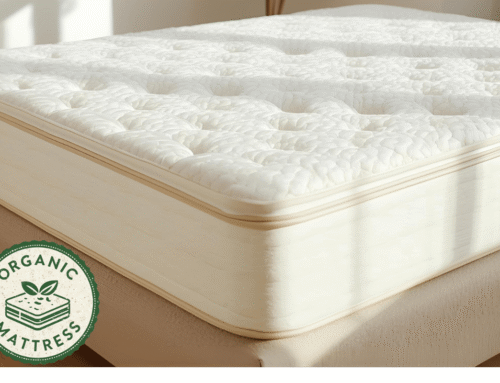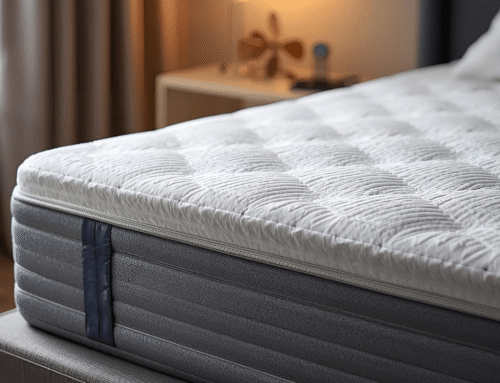Washing your sheets isn’t enough. Over time, a mattress can hold onto sweat, smells, and the occasional spill. And if you ignore it, the problem builds. Some people don’t notice anything until their room smells off or they start waking up feeling groggy.
Memory foam is great for comfort, but it doesn’t handle tough cleaning well. You can’t just soak it and scrub like you would with other stuff. That usually makes things worse. Instead, a gentle approach works better, something like sprinkling baking soda, vacuuming, and doing light spot cleaning. Trying to speed things up with strong cleaners or too much water usually backfires. The mattress might sag or start to smell musty and that’s hard to fix. If you want your bed to last and feel fresh, you need a way to clean it that won’t mess it up.
Here’s what actually works: be gentle, go slow, and stick with simple tools. No need to overdo it. Clean it the right way, and you’ll keep that comfy feel without damaging the foam.
Knowing what a memory foam mattress is, how it differs from a gel memory foam mattress, knowing the best thickness, the typical expansion time after delivery, the usual cost, and the effects of sleeping on it before 48 hours can also help why proper cleaning matters.
Key Takeaways
- Memory foam holds onto sweat, dust, and odors more than traditional mattresses, so gentle, routine cleaning helps maintain freshness and extend its lifespan.
- Use mild soap and cold water to spot clean. Blot the area instead of scrubbing to avoid damaging the foam or locking in moisture.
- Baking soda helps absorb unwanted odors and dampness. Let it sit overnight, then vacuum the surface for a deeper clean.
- Make sure the mattress dries fully in a shaded, well-ventilated spot. Skip heat sources, steam cleaners, and heavy water use to prevent mold or foam damage.
- Add a waterproof cover, rotate the mattress every few months, and vacuum regularly to keep it supportive, clean, and in good shape.
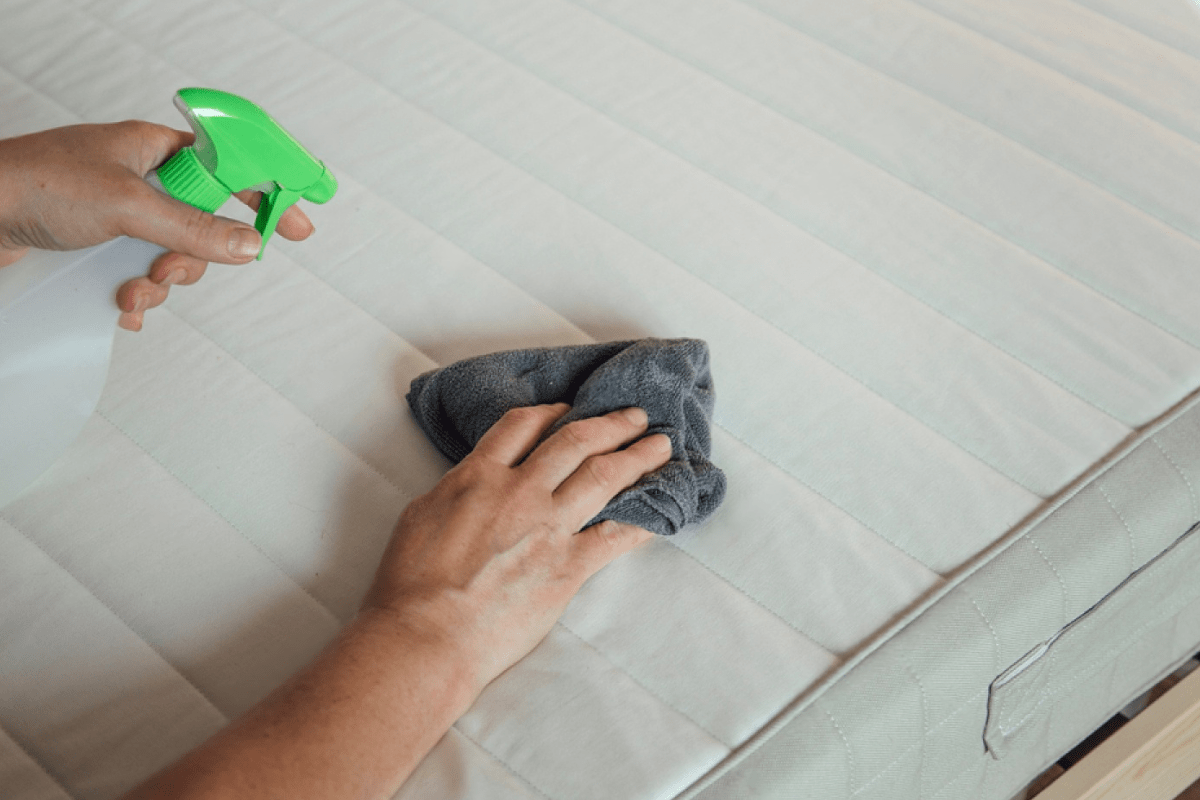
Why It’s Important To Clean Your Memory Foam Mattress
Cleaning a memory foam mattress isn’t just about appearances. Over time, it collects sweat, dead skin, and dust that sink deep into the layers. Even a few unnoticed spills can lead to long-term stains and a musty smell.
Memory foam holds moisture and odors more than traditional mattresses, which means air circulation alone won’t be enough. Without regular cleaning, that damp feeling or strange smell may not go away, no matter how often the sheets get changed. Mold and mildew also tend to thrive in this kind of environment.
A mattress that’s cleaned routinely can feel more comfortable at night and doesn’t wear down as quickly. That soft, supportive feel stays intact much longer when dirt and oils aren’t trapped in the foam. Keeping it fresh helps avoid needing a replacement too soon. Knowing the typical lifespan of a memory foam mattress, the recommended frequency for replacing it, and how often it should be rotated are all important for proper care and cleaning to extend its durability and maintain comfort.
What You’ll Need To Get Started
You don’t need a lot to keep a memory foam mattress clean. A vacuum with an upholstery brush works great for picking up dust, hair, and crumbs. It’s easy and quick. To keep things smelling fresh, sprinkle some baking soda over the mattress. Let it sit for a bit, then vacuum it up. This helps with odor between deeper cleans.
If you’re dealing with stains, mix a little dish soap with cold water in a spray bottle. Spray lightly and don’t soak it. You can also try white vinegar, but the smell might stick around for a while. Some people don’t like that.
Use a soft cloth or towel to blot, not scrub. Scrubbing can damage the foam. And stick to cold water because hot water can mess up the foam’s shape. Skip the steam cleaner too. It’s too rough and can shorten the life of your mattress.
How Do You Clean A Memory Foam Mattress?
When dealing with common issues like stains and urine on your memory foam mattress, knowing how to get stains out of memory foam mattress easily and how to get urine out of it is essential.
- Remove Bedding – Take off all sheets, pillowcases, and covers. These should be washed in hot water to help eliminate bacteria and allergens. Most people find this helps keep their sleep space feeling fresh.
- Vacuum Thoroughly – Using an upholstery attachment, vacuum the entire surface including the sides. Dust, hair, and dead skin tend to collect over time, especially in corners. It’s something many overlook until allergy symptoms show up.
- Spot Clean Stains – Mix a mild detergent with cold water and dampen a cloth. Blot stains gently, rubbing just spreads the mess around. Some have tried harsh cleaners before and ended up damaging the foam.
- Use Vinegar for Odors or Urine – Combine equal parts white vinegar and water in a spray bottle. Lightly mist the area and blot with a clean towel. This method works better than just covering up the smell.
- Deodorize With Baking Soda – Sprinkle baking soda evenly across the surface and let it sit for several hours. Overnight is ideal. This method absorbs moisture and neutralizes lingering odors.
- Vacuum Again – Go over the entire mattress to remove all the baking soda. It may take a few passes, especially if it’s been sitting overnight. The result usually feels cleaner and fresher.
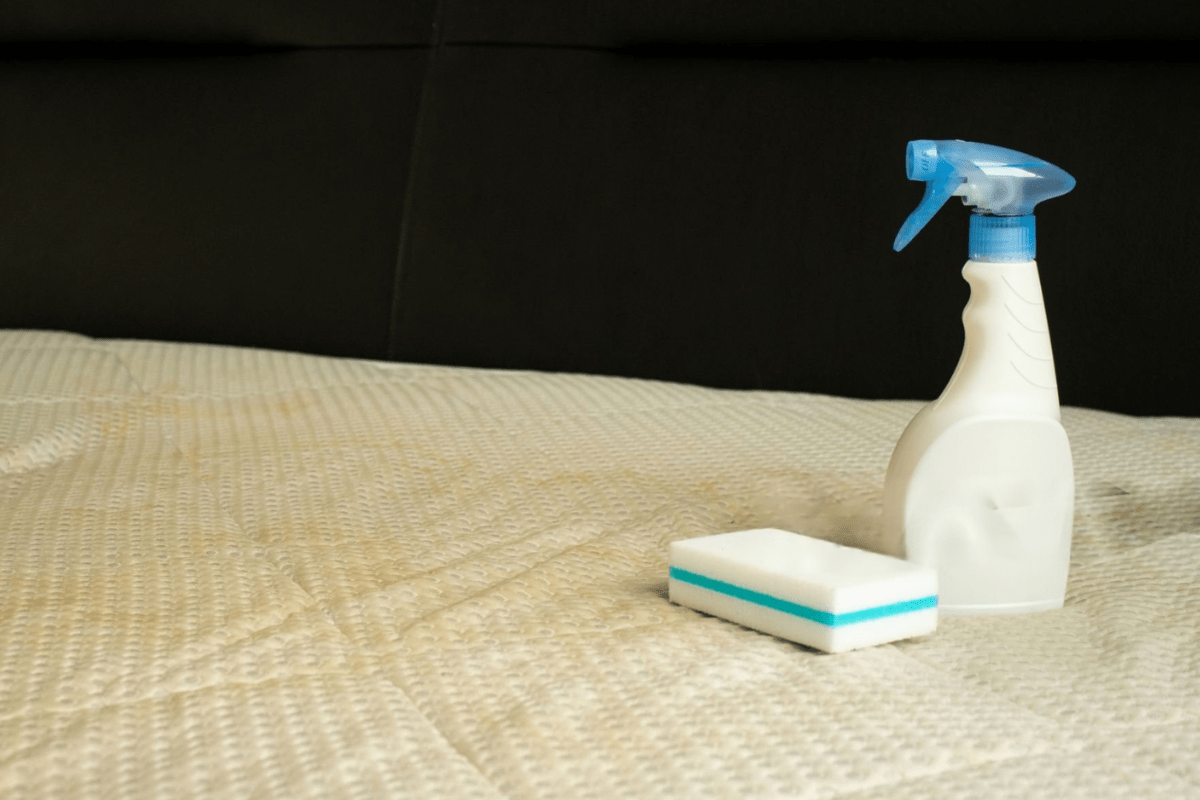
How To Wash Memory Foam Mattress Toppers or Covers
Not all mattress toppers or covers can go straight into the washer, so it helps to check the care label first. Most removable covers with zippers work well on a cold, gentle cycle using mild detergent. Skipping the dryer and air-drying the cover helps prevent shrinking or damage to the fabric.
Foam layers are more delicate and need extra care. They shouldn’t be soaked or placed under running water since that can break down their structure. A damp cloth with a little mild soap works for surface cleaning, followed by air-drying flat away from heat or direct sunlight.
Some people try vacuuming the foam before spot cleaning to remove loose dirt and dust. That step keeps the foam cleaner between washes and avoids unnecessary scrubbing. It may take longer to dry, but preserving the shape and comfort of the foam matters more than rushing through the process.
Can You Deep Clean A Memory Foam Mattress?
Yes, a memory foam mattress can be deep cleaned, though it takes a delicate approach. Scrubbing aggressively or using strong cleaners isn’t safe for the foam. Lightly blotting stains with a mild solution and patience works better than pressure or force.
Spot cleaning should never be skipped, even for stains that seem minor. Dirt and oils from skin or spills can settle deep into the foam over time. Addressing spots right away keeps the mattress fresh and reduces odors before they develop.
Baking soda helps absorb moisture and neutralize lingering smells, but it needs time. Leaving it on overnight before vacuuming allows it to work deeper. For models that allow it, rotating the mattress helps spread wear evenly across the surface and keeps it feeling balanced.
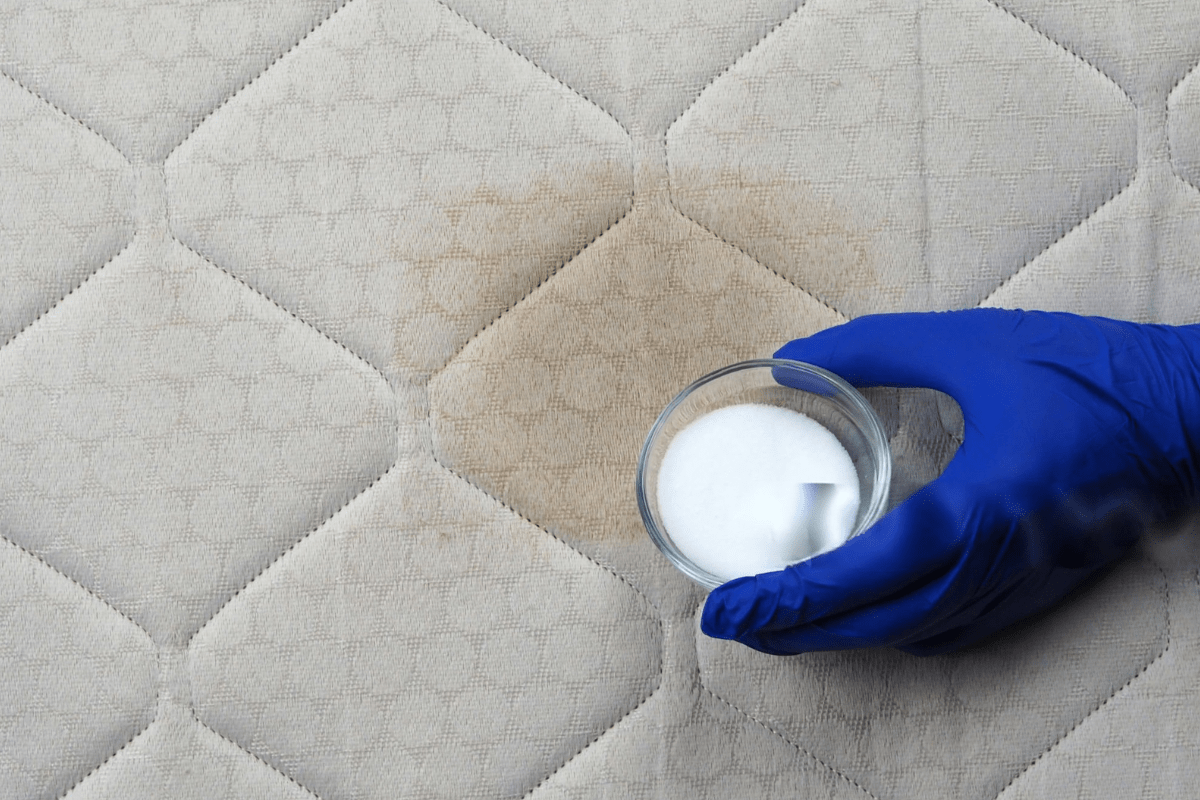
Drying Tips To Prevent Mold Or Damage
Drying a memory foam mattress takes patience, but it matters just as much as the cleaning itself. Foam holds onto moisture longer than other materials, which means mold and mildew can creep in fast. Some people have learned the hard way that tossing damp mattresses back on the bed too soon leads to that musty smell that never really goes away.
Drying a memory foam mattress prevents mold or damage. Setting the mattress upright helps air move through it more freely. Fans placed nearby or cracked-open windows help push moisture out faster, especially in rooms that don’t get much airflow. Keeping it flat on the ground slows everything down, which can trap pockets of dampness inside.
Too much sun exposure seems like a quick fix, but it ends up causing more damage. Prolonged heat weakens the foam structure and can warp its shape. A shaded area with a steady breeze is better for drying without risking breakdown of the material.
When To Clean A Foam Mattress
Cleaning a foam mattress every 3 to 6 months helps maintain its comfort and freshness. Skipping regular cleanings allows dust, sweat, and odors to settle into the foam, which affects how well it supports the body. Those who stick to this routine usually notice fewer sleep disruptions caused by allergies or musty smells.
A spill or nighttime accident calls for immediate attention. Letting liquids soak in too long encourages mold growth and lingering smells that are difficult to remove later. People who act quickly with a gentle cleaner and absorbent cloth often avoid permanent damage.
Mattress care also fits naturally into seasonal deep cleaning. Stripping the bed to wash sheets and pillowcases presents a good chance to vacuum the surface and spot-clean stains. Taking a few extra minutes during these times can prevent buildup and keep the mattress feeling fresher longer.
Extra Tips For Keeping Your Mattress Fresh
To further maintain your mattress’s comfort and longevity, focus on making a memory foam mattress firmer and cooler, fixing dips in it, and properly storing it.
- Use a waterproof mattress protector to shield the mattress from spills and stains. It helps prevent liquids from soaking in and causing odors or damage.
- Let the mattress air out regularly by removing all bedding. This allows moisture to evaporate and reduces the chance of mold or mildew buildup.
- Wash sheets and pillowcases every week to keep the sleeping environment clean and reduce allergens that settle on the mattress surface.
- Rotate the mattress every few months to avoid permanent body impressions. This helps maintain even wear and prolongs the mattress’s comfort and support.
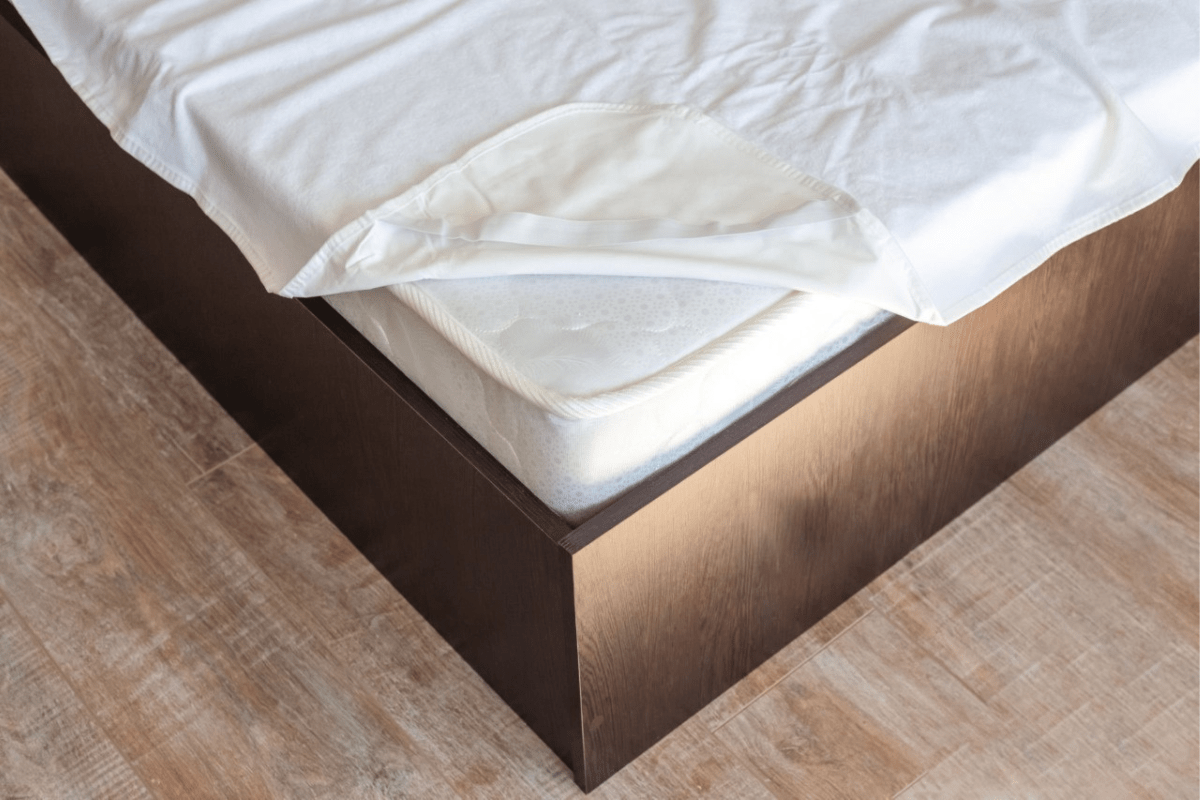
What To Avoid When Cleaning Memory Foam
Memory foam requires gentle care during cleaning to prevent damage. Excess water can seep into the mattress, causing mildew growth and weakening the foam’s structure. Avoid soaking or saturating the material to preserve its integrity.
Harsh chemicals such as bleach and ammonia prove too aggressive for memory foam and may cause discoloration or deterioration. These substances break down the foam’s delicate composition, shortening its lifespan and comfort. Mild cleaners or specially designed foam products serve as safer alternatives.
Using steam cleaners or machine washing the mattress also carries risks. Heat from steam can speed up foam breakdown, and agitation from washing machines can deform the material. Spot cleaning with a damp cloth and allowing the mattress to air dry in a well-ventilated area helps maintain its shape and longevity. Additionally, proper care extends beyond cleaning. Moving and compressing a memory foam mattress and disposing of it responsibly help prevent damage and environmental harm.
Final Thoughts
Cleaning a memory foam mattress isn’t hard, but you do need to be careful. The foam is soft and can get damaged if you scrub too hard or use the wrong stuff. If you spill something, don’t wait and blot it up right away. The longer it sits, the harder it is to clean and the more likely it’ll smell.
You don’t need fancy products. A little cold water and a small amount of mild soap or detergent will usually do the trick. Just spot clean the area. Don’t soak it because too much moisture can cause mold. After cleaning, make sure the mattress dries all the way. Give it time and good airflow.
To keep things fresh between cleanings, sprinkle baking soda on the surface. Let it sit for a few hours, then vacuum it up. It helps pull out smells and moisture. Doing this once a month helps your mattress last longer and makes your bed feel cleaner. If you keep up with this kind of maintenance, your mattress will stay in good shape for years.



